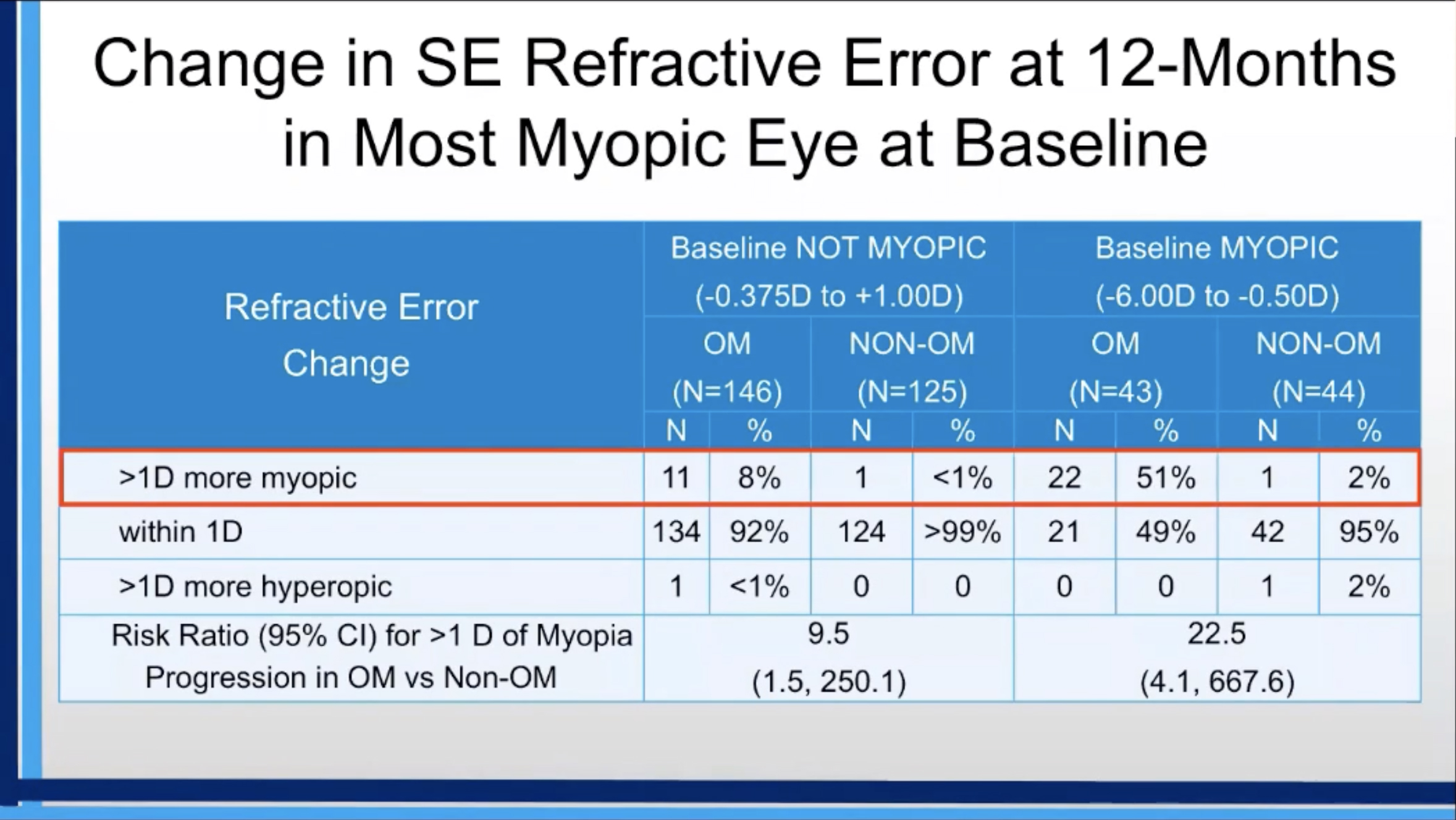“Clinicians have expressed concern that the extra accommodative effort required with overminus spectacles might increase myopia progression,” Sergul Erzurum, MD, noted during her October 7 presentation at Academy 2020. She and her team of researchers have determined that overminus lens treatment for childhood intermittent exotropia is associated with increased progression of myopia, especially in children who are already myopic.
The study evaluated change in refractive error in children treated with overminus compared with non-overminus spectacles for 12 months and enrolled 386 three- to 10-year-old children with intermittent exotropia with 196 who received overminus spectacles (-2.50D over cycloplegic refraction) or non-overminus spectacles (refractive error correction only, if needed, or plano spectacles for participants who did not need refractive correction). The researchers performed cycloplegic refraction within two months prior to the baseline exam and again at 12 months after randomization.
 |
| During Academy at Home 2020, Dr. Erzurum warned attendees about the side effects of overminus spectacles for childhood intermittent exotropia. |
Dr. Erzurum found that the mean change in SE refractive error from baseline to 12 months was greater in the overminus group than the non-overminus group (-0.42D vs -0.04D). Also, 17% of the participants in the overminus group and 1% in the non-overminus group had more than 1.00D of myopia progression (risk ratio = 14.8). The risk ratio for having more than 1.00D of myopia progression over 12 months in the overminus vs. non-overminus group was 22.5 (51% vs. 2%) in the 87 participants who were myopic at baseline (SE -0.50D to -6.00D) and 6.4 (13% vs. 2%) in the 108 participants who were emmetropic (SE -0.375D to +0.375D) at baseline. Among the 161 participants with low hyperopia (SE +0.50D to +1.00D) at baseline, 4% of those randomized to overminus and 0% randomized to non-overminus had more than 1.00D of myopia progression at 12 months.
“Long-term effects of overminus therapy is unknown and we are now collecting refractive error and axial length data at 24 and 36 months,” Dr. Erzurum concluded. “Before considering overminus therapy, discuss the risk of myopic progression with parents.
Erzurum SA, Chen A, Chandler DL, Hercinovic A. Change in refractive error with overminus spectacle treatment in children three to 10 years of age with intermittent exotropia. Presented at Academy at Home 2020, October 7, 2020. |

